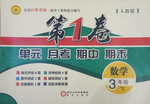题目内容
Many of the world’s countries have reached or are approaching zero population growth (ZPG) .Nearly all such lands are economically well developed.They include much of Europe(including Russia),the United States,Canada,Japan.and Australia.As the rate of natural increase(RNI)declines,two things happen.First,the population begins to decline if the loss is not balanced by immigration.Second,a country’s population ages because there are fewer births.
Is achieving ZPG good or bad? What happens when a country’s population begins to drop? Many people,after all,believe that population decline is a good thing.But is it good for everyone? Does everyone agree?
An aging population can create many problems.Senior citizens require more health care and medical attention.Rather than paying into retirement programs,they begin to draw from their pensions.In the US,the Social Security program,according to many experts,will be used up by 2018.It will pay out more money than it takes in.Additionally, a great number of jobs go begging in search of people willing or entry。level positions that pay low wages.With an able to do them.Many of these jobs are aging population,who will fill them? At the other extreme,some positions require a large number of training and highly specialized skills.Who will fill these positions as retirees leave the workforce?
The answer to the problem of declining and aging population is simple:increased migration.Today many people,particularly those from less developed countries,are migrating in search of employment.Many are willing to take jobs that cannot(or will not) be filled by the domestic population.Others are well educated and highly skilled.Both groups contribute to a country’s economy progress in many ways.Further, they add to the richness of a country’s culture.Of greatest importance,perhaps,is the fact that they have become absolutely necessary to the economy of many lands.As you can see,for many countries and for most immigrants,migration is a win—win situation.
1.In the writer’s view,which of the following statements is TRUE?
A.Not everyone agrees that achieving ZPG is absolutely good.
B.Achieving ZPG is every country’s aim in spite of its side effects.
C.Achieving ZPG is bad for senior citizens.
D.Achieving ZPG is good for employment.
2. According to the passage,the best way to solve the problem of declining and aging population is .
A.to improve the health care system B.to increase RNI
C.to increase employment D.to increase migration
3.The underlined words “the domestic population’’ can be replaced by .
A.people within the country B.people from developing countries
C.people without a college education D.people living abroad
4.The main idea of the last paragraph is
A.the advantages of increased migration
B.the problem of declining and aging population
C.how to increase migration
D.some ways to enrich a country’s culture
 第1卷单元月考期中期末系列答案
第1卷单元月考期中期末系列答案
